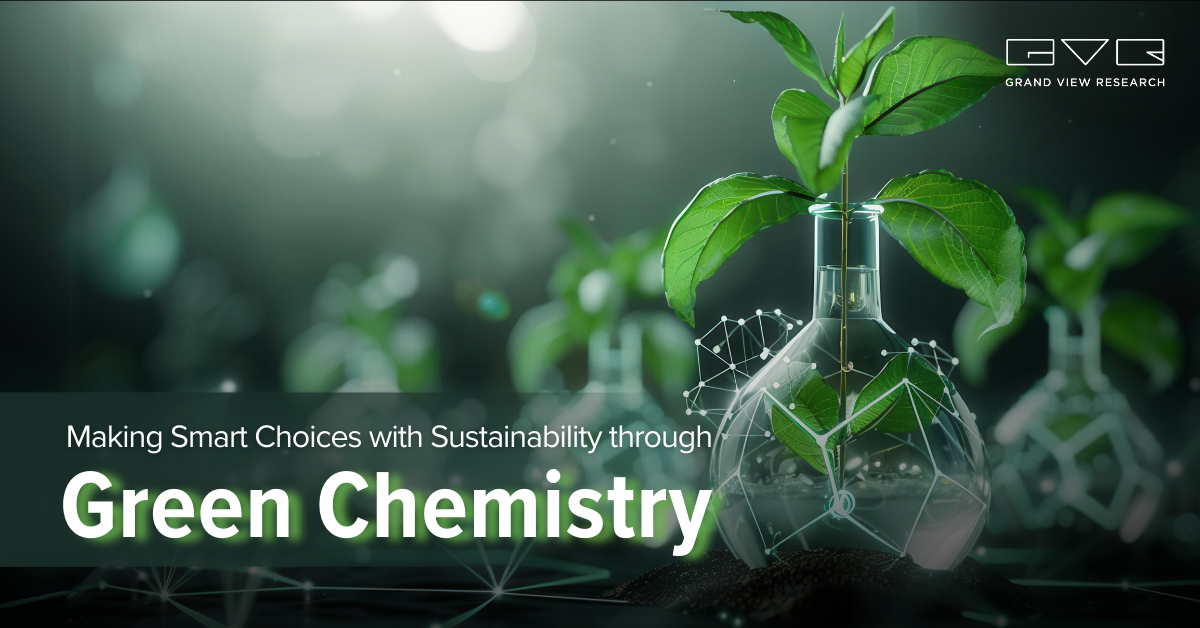Making Smart Choices with Sustainability through Green Chemistry
Human ingenuity and sustainability have carved out a niche in green chemistry; challenges and opportunities lie ahead for businesses to achieve Sustainable Development Goals (SDGs). Inevitably, sustainable chemistry is a primary force behind research (on products, processes and materials) and the circular economy. Chemists, researchers, and manufacturers are striving to reduce material, waste, and energy use, use renewable feedstocks, and minimize or eliminate hazards and risks.

The father of green chemistry, Paul Anastas, and board chairman of Warner Babcock Institute for Green Chemistry, Dr. John C. Warner, define green chemistry as the utilization of a set of principles that can eliminate or reduce the generation or use of hazardous substances in the manufacture, design and applications of chemical products.
They introduced 12 principles of green chemistry to eliminate the creation of toxic wastes from products, processes, and chemicals.
-
Prevent waste;
-
Maximize atom economy;
-
Design safer chemicals and products;
-
Use safer solvents and reaction conditions;
-
Increase energy efficiency;
-
Use Renewable feedstocks;
-
Avoid chemical derivatives;
-
Use catalysts, not stoichiometric reagents;
-
Design chemicals and products to degrade after use;
-
Analyze in real-time to prevent pollution;
- Minimize the potential for accidents.
Objectives Highlighting Sustainable Chemistry
Meanwhile, UNEP has developed ten objectives to cash in on the full potential of chemistry and underpin the implementation of the 2030 Sustainable Development Agenda:
-
Minimize chemical hazards;
-
Avoiding regrettable substitutions and alternatives;
-
Sustainable sourcing of resources and feedstocks;
-
Advancing sustainability of production process;
-
Advancing sustainability of products;
-
Minimizing chemical release and pollution;
-
Enabling non-toxic circulatory;
-
Maximizing social benefits;
-
Protecting workers, consumers and vulnerable population;
- Developing solutions for sustainability challenges.
Green chemistry will continue to play an invaluable role in saving and conserving resources and creating a healthier environment.
How are Industries Responding to Sustainable Chemistry?
Green chemistry has had a considerable influence across industry verticals, including pharmaceuticals, electronics, food, agriculture, and energy, among others. As stakeholders look to enhance the environmental profile of chemical processes, interest in green chemistry has grown by leaps and bounds. For instance, the European Union’s regulation on Registration, Evaluation, Authorization and Restriction of Chemicals (REACH) is a proponent of green chemistry and sustainable innovation.
- Pharmaceutical Industry: Pharma giants and medical device companies are striving to develop medicines and vaccines with less environmental impact. They have also sought sustainable chemistry to reduce waste, minimize resource use, and run safe processes. The use of greener technologies to manage chemical manufacturing, the entire chemical supply chain and the end-life of final products has gained similar traction.
Drug developers have also sought ways to substitute reagents and solvents that are environmentally friendly and less harmful. In December 2023, scientists at the University of Texas found that the use of carbonated water in chromatography can make the relatively common chemical technique more environmentally benign. Notably, a single chromatograph reportedly generates around a liter of liquid waste; some leading pharmaceutical companies conduct over 1,000 chromatographic studies per day. Carbonated water could be the silver lining, minimizing the technique’s Analytical Method Greenness Score (AMGS).
- Electronics: Pressure from investors, governments and environmental NGOs to minimize the presence of toxic substances in products and manufacturing processes has fueled the penetration of sustainable chemistry. To illustrate, in May 2024, researchers from Flinders University’s Nanotechnology Department joined forces with global scientists to develop the shape and size of gold nanoparticles without the use of hazardous chemicals. Prominently, gold nanoparticles are sought-after across applications, including electronics, sensing, catalysis, and drug delivery.
Green chemistry will continue to inspire a slew of industries to eliminate and minimize waste in the manufacturing of chemicals and allied products. Notably, greener solvent alternatives, such as plant-based solvents and sustainable battery materials, have become a sustainable approach.
Way Forward
The emergence of sustainability awareness, corporate goals, and the push to achieve SDG goals have made green chemistry an indispensable part of a sustainable economy. Stakeholders are expected to prioritize commitment to sustainability and STEM. In March 2024, Dow teamed up with Beyond Benign to boost green chemistry education. The two giants will collaborate with educators to design state-of-the-art on-demand training programs, while Beyond Benign contemplates expediting the recruitment of universities into its Green Chemistry Commitment (GCC) program.
To schedule a free market intelligence database demo, please complete the form below:
Service Guarantee
-
Insured Buying
This report has a service guarantee. We stand by our report quality.
-
Confidentiality
Your transaction & personal information is safe and secure.
-
Custom research service
Design an exclusive study to serve your research needs.
-
24/5 Research support
Get your queries resolved from an industry expert.